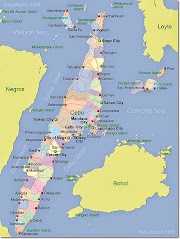From Rebellion to Revelry: A Look Back at Philippine Independence Day
Every year on June 12th, the Philippines erupts in a vibrant celebration of freedom. Flags with the iconic sun, stars, and rays flutter proudly, streets echo with lively music, and families gather for joyous feasts. But beneath the festive atmosphere lies a rich history, a story of resilience and the hard-won fight for self-determination.
For centuries, the Philippines was a colony, first under Spanish rule and then under American control. The yearning for independence simmered for generations. Brave Filipinos, like national hero Jose Rizal, ignited the flames of rebellion with their writings and activism. Unsurprisingly, these acts of defiance were often met with harsh resistance from the colonizers.
The Philippine Revolution, a bloody and protracted struggle, finally erupted in 1896. After years of fighting, the revolutionaries, led by Emilio Aguinaldo, declared independence on June 12, 1898, in Kawit, Cavite. This momentous occasion marked the birth of the First Philippine Republic, a beacon of hope for a free nation.
However, the road to true independence wasn't smooth. The Philippine-American War followed, dashing initial dreams of a sovereign nation. It wasn't until 1946, after enduring Japanese occupation during World War II, that the Philippines finally achieved full independence from the United States.
Today, Philippine Independence Day is more than just a commemoration of a historical event. It's a day to reflect on the sacrifices made by past generations, a reminder of the strength found in unity. Families gather to hear stories of bravery and patriotism, ensuring these pivotal moments in history are never forgotten.
The celebrations are a vibrant kaleidoscope of traditions. Parades weave through streets, showcasing colorful costumes and cultural dances. Children participate in "Santacruzan," a religious procession re-enacting the finding of the Holy Cross. The air fills with the sounds of Kundiman love songs and the rhythmic beat of bamboo poles in "Tinikling" dances.
But Philippine Independence Day is not just about revelry. It's also a time to look forward. Filipinos use this occasion to discuss the challenges the nation faces and how to build a brighter future. It's a day to celebrate not just the freedom won, but also the ongoing pursuit of a more just and prosperous society.
So, this June 12th, as you witness the festive spirit of Philippine Independence Day, remember the long journey that led to this moment. It's a story of struggle, resilience, and the unwavering pursuit of freedom – a story that continues to inspire generations of Filipinos.

.jpeg)



.jpeg)



.jpeg)
0 Comments